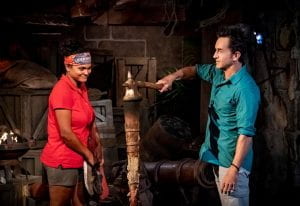As I’ve shared before, one of my guilty pleasures is reality TV. Survivor, Big Brother and The Voice are the three that I tend to get caught up in as the season progresses. I love that there are few staff members who also confess to watching these shows and we get into some animated conversations about the challenges, the contestants and the composition of each episode. As we all tend to watch at various times (as a result of work schedules, bedtimes for young children and sharing the remote) there is an unwritten rule that we can’t discuss an episode until everyone has watched it. We tend to have our favourite characters and those that we question their motives. We dissect the competitions and applaud the physical strength that some contestants display. We’ve all agreed that the “under a steel grate” water competition in Survivor is one that is beyond our tolerance. We’ve all admitted to wondering out loud to our family members, who may not be fans, why a contestant made the move that they made or voted a way that they did.
We are all quite aware that the lines of reality are certainly blurred in these shows and that the camera crew is close by, which can’t help but influence what is said and what is used within the 42 minutes of actual episode time.
Recently we’ve started to discuss the power of editing on us, as viewers. Editing has the potential to keep the audience intrigued with sequencing and purposefully placed interactions between the contestants. There have times when I’ve rewatched the beginning of an episode to see if there were clues as to whom would be voted off at the end of the show. With these reality shows, editors have 24 hours each day to capture footage and then recreate a montage that is TV worthy.
If schools had cameras running 24/7, capturing everything that occurs in a day, I wonder what would make it to a final cut. Would that final cut be based on your intended audience? 
What would be most meaningful for the families of our students to view? I imagine they would want to see their children being kind, playing with peers, exceling in class, being respectful to the adults that interact with them.
What about colleagues in other schools? I imagine that they would enjoy seeing exciting and unique learning activities that they could represent in their own classes. Or maybe seeing a colleague struggle with an interaction would give them a sense of understanding and compassion that we all have those challenging days.
What about our Senior Team ~ those individuals who make decisions about funding, programming options, human resource allocation? I imagine that they would like to see the impact of their decisions. Did they place the most effective admin team in a school community? Are the seeing the intended outcomes of their funding decisions?
What about our own families? I know that by the time I get home at the end of the day, my husband is very authentic in his interest as he asks, “So how was your day?”. My response is usually, “Awesome as always” or “Another busy one”. It is rare that I debrief the day. I imagine they would want to see us enjoying our days at work and knowing that we are surrounded by a school family who takes care of us when they aren’t there to take care of us.
 But alas, our lives in schools are not digitally captured, although there have been days when I felt like we were on an endurance challenge and dodging the opportunity for Jeff Probst to say, “The tribe has spoken”.
But alas, our lives in schools are not digitally captured, although there have been days when I felt like we were on an endurance challenge and dodging the opportunity for Jeff Probst to say, “The tribe has spoken”.
